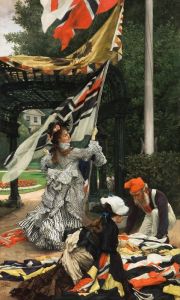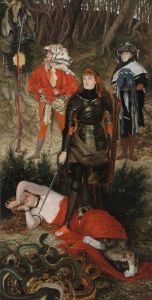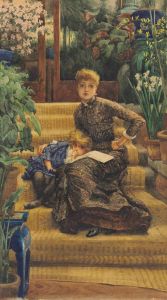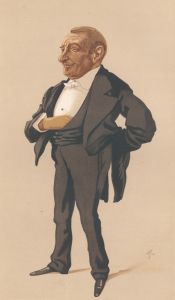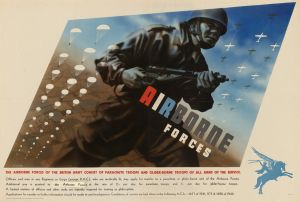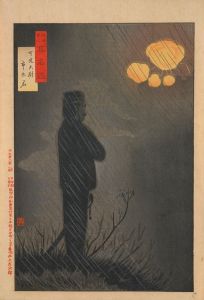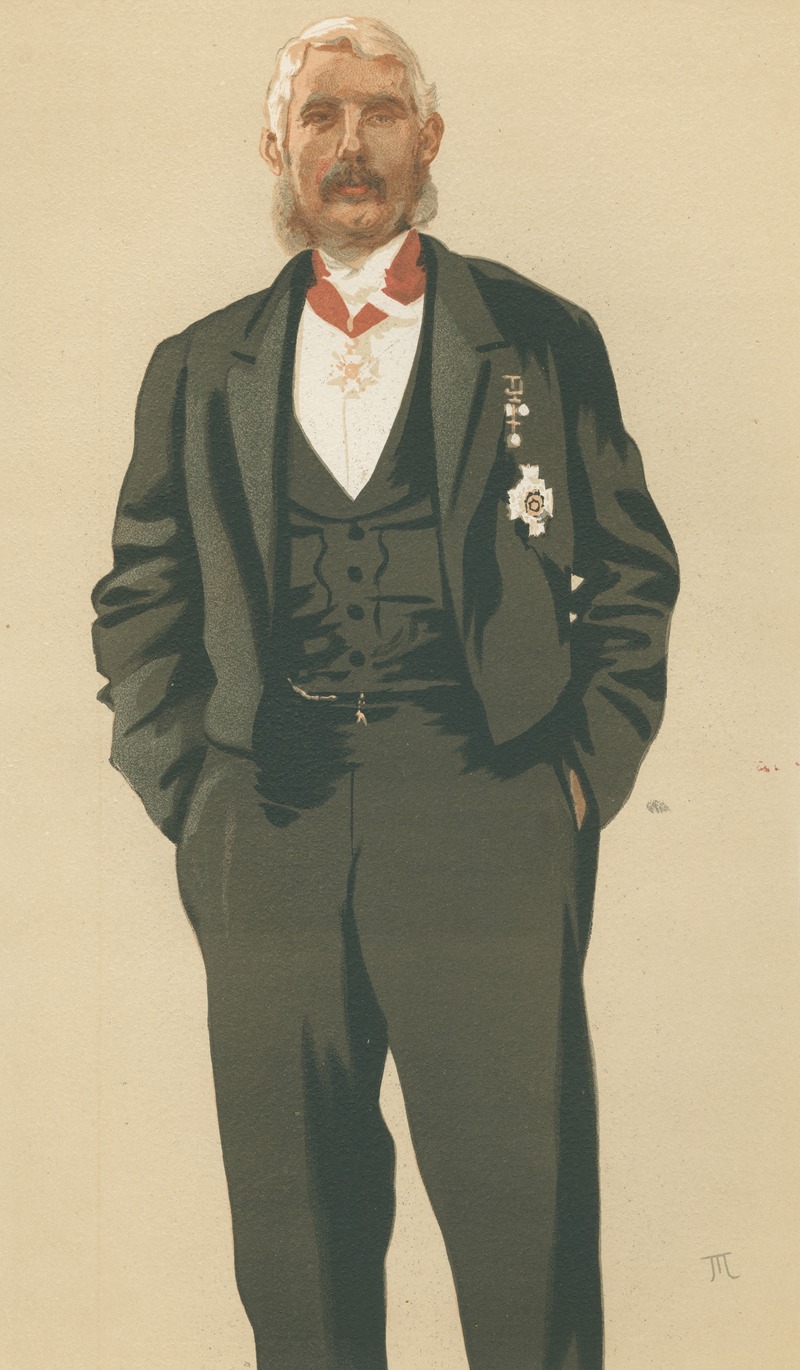
The Commader in Chief in India [General Sir Frederick Paul Haines], Military and Navy, from Vanity Fair, March 25, 1876
A hand-painted replica of James Tissot’s masterpiece The Commader in Chief in India [General Sir Frederick Paul Haines], Military and Navy, from Vanity Fair, March 25, 1876, meticulously crafted by professional artists to capture the true essence of the original. Each piece is created with museum-quality canvas and rare mineral pigments, carefully painted by experienced artists with delicate brushstrokes and rich, layered colors to perfectly recreate the texture of the original artwork. Unlike machine-printed reproductions, this hand-painted version brings the painting to life, infused with the artist’s emotions and skill in every stroke. Whether for personal collection or home decoration, it instantly elevates the artistic atmosphere of any space.
The artwork titled "The Commander in Chief in India [General Sir Frederick Paul Haines], Military and Navy" is a caricature by the renowned French artist James Tissot, published in the British magazine Vanity Fair on March 25, 1876. Vanity Fair was a popular weekly magazine known for its satirical portraits of prominent figures of the time, often accompanied by insightful commentary. These caricatures were a significant aspect of the magazine's appeal, providing both entertainment and a visual record of influential personalities in various fields, including politics, the arts, and the military.
General Sir Frederick Paul Haines was a distinguished British Army officer who served as the Commander-in-Chief of the Indian Army from 1875 to 1881. Born on August 10, 1819, Haines had a long and illustrious military career. He was commissioned into the 4th (The King's Own) Regiment of Foot in 1839 and went on to serve in various capacities throughout the British Empire. His service included participation in the Crimean War, where he was present at the Battle of Alma, the Siege of Sevastopol, and the Battle of Inkerman. His leadership and service earned him recognition and advancement within the military ranks.
As Commander-in-Chief in India, Haines was responsible for overseeing the British Indian Army during a period of significant political and military challenges. His tenure was marked by efforts to modernize the army and improve its efficiency. He focused on the reorganization of the forces, enhancing training programs, and addressing logistical issues to ensure the army's readiness and effectiveness. Haines' leadership was crucial in maintaining the stability and security of British interests in the Indian subcontinent during a time of colonial expansion and consolidation.
James Tissot, the artist behind the caricature, was known for his detailed and often humorous depictions of his subjects. His work for Vanity Fair captured the essence of the individuals he portrayed, often highlighting their most recognizable features or characteristics. In the case of General Sir Frederick Paul Haines, Tissot's caricature would have likely emphasized his military bearing and distinguished service, reflecting both his prominence and the public's interest in military leaders of the era.
The publication of this caricature in Vanity Fair would have contributed to the public's awareness and perception of General Haines, offering a glimpse into his role and significance within the British Empire. Such portrayals were an essential part of the magazine's contribution to the cultural and social discourse of the time, providing a visual commentary on the figures who shaped the world in which its readers lived.
Overall, the caricature of General Sir Frederick Paul Haines by James Tissot in Vanity Fair serves as a historical artifact, capturing the image of a key military leader during a pivotal period in British colonial history. It reflects the intersection of art, media, and military history, offering insight into the ways in which public figures were represented and perceived in the late 19th century.







